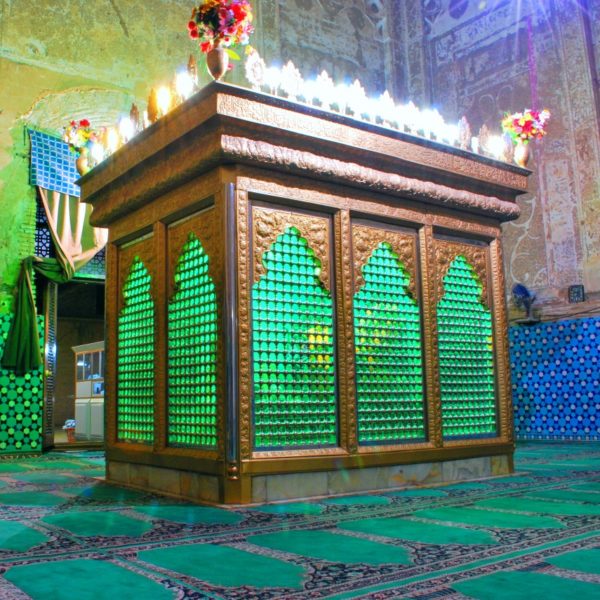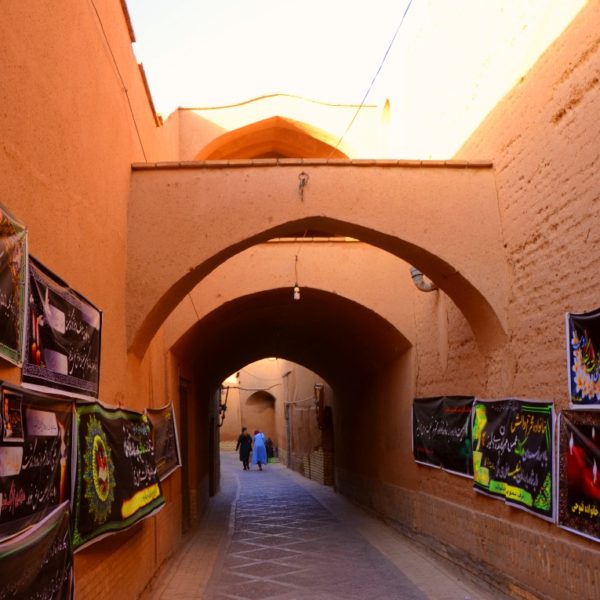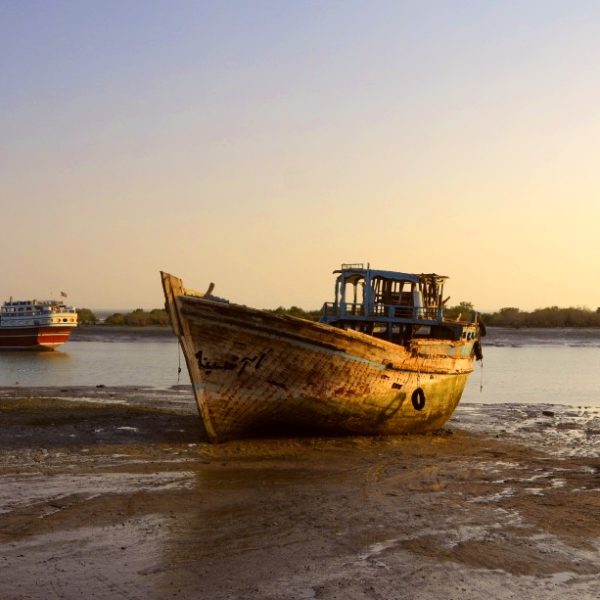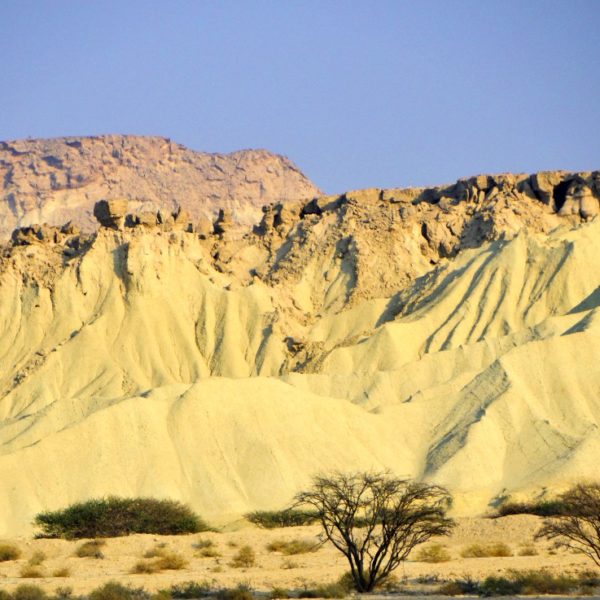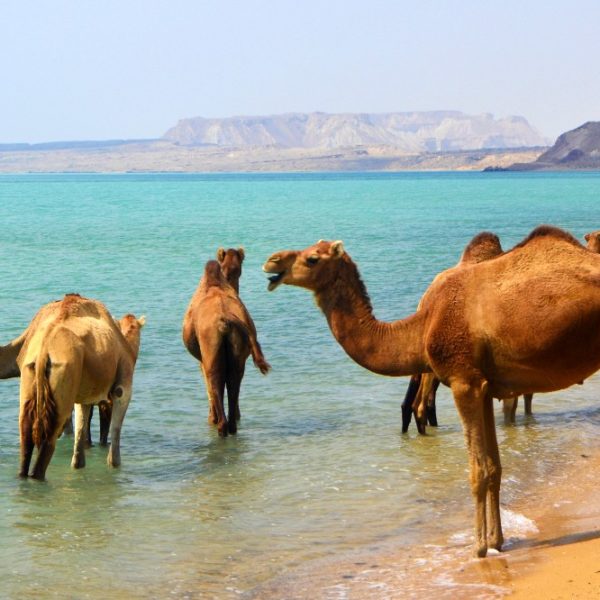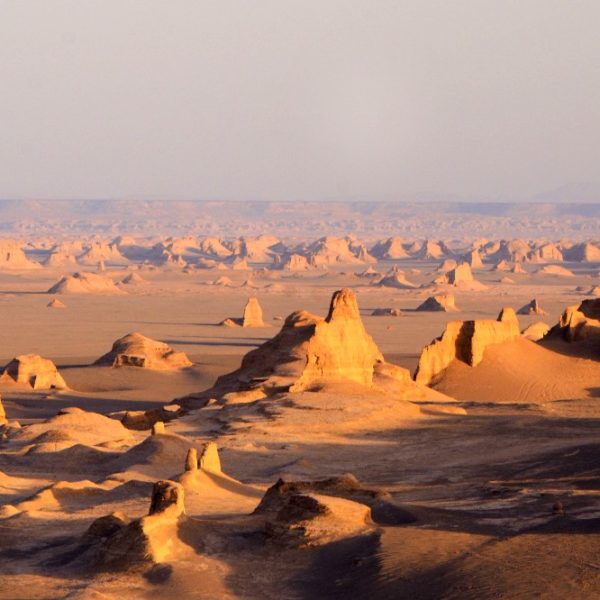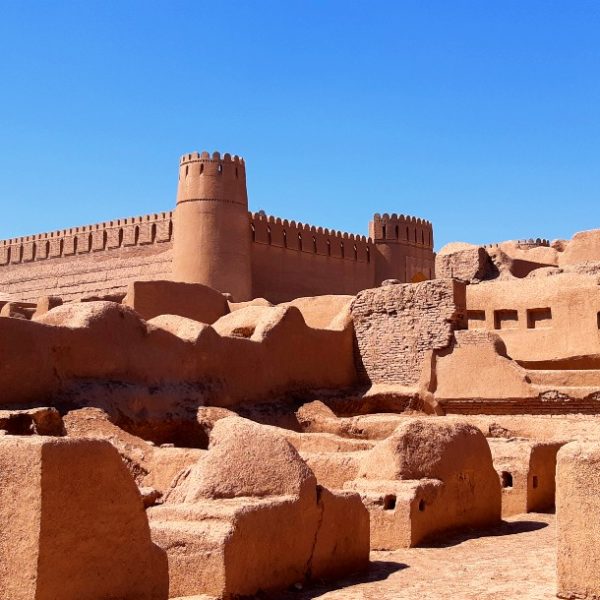Iran – south-east – 10 days
The south-east of Iran is one of the less frequently visited regions of this amazing and beautiful country. The tour to which we would like to invite you will be an extraordinary adventure for the lovers of history and archaeology.
We will visit the city of Kerman, the Bam and Rayen citadels and the archaeological sites in Jiroft. For people who are interested in geology and unusual landscapes, such places as Kaluts, the largest salt cave in the world called Namak, the Qeshm Island Global Geopark or mud volcanoes are only the most important of many attractions that wait for our travellers to the south-eastern part of Iran. Even for those persons who have already visited Iran, the journey to its south-eastern regions will be a completely different experience. The culture, traditions, language, and even religion of the inhabitants of the Hormozgan and Baluchestan Provinces differ from what we usually associate with what used to be Persia.
itinerary
Flights to Tehran usually take place in the afternoon and evening. After arrival, visa formalities and transfer to the hotel.
In the morning, we will fly to Kerman – a very interesting city, which is nevertheless not very popular with tourists. After arrival, we will visit the major highlights, starting from the Ganjali Khan Complex with the bath houses, caravanserai and bazaar originating from the 18th century. The next item on our itinerary will be a visit to the Friday Mosque – Jameh. In the afternoon, we will drive to Mahan where we will see one of the most beautiful gardens of Iran, the Shahzade Garden, which is located in the desert region of the southern part of Iran. In the evening, we will visit the Shrine of Shah Nematollah Vali – a great 16th century mystic and poet. Currently, it is a pilgrimage destination for Sufi Brotherhoods. Night rest in a traditional house adapted into a hotel.
B.D
Those who will want to get up early in the morning will be able to see the unique spectacle which is the sunrise at the hottest desert of the world, among the amazing geological formations which are Kaluts. Return to Mahan, and then – after a short rest – we will drive to the town of Rayen and visit the citadel there. Subsequently, we will continue our journey south – to Bam where we will see the largest fortress built from sun-dried mud bricks. The history of the town and citadel spans over 2000 years. The fortress garrison protected trade routes from attacks of tribes from the Lut Desert. The citadel was destroyed during the tragic earthquake in 2003, but now it has been mostly rebuilt, owing to international help. Bam is also an important site of cultivation and processing of dates. We will try some of the reportedly best dates in Iran. Night rest in Bam.
B.
After breakfast, we will set off to Bandar Abbas. En route we will stop in Jiroft, a small town that was founded at the site where representatives of one of the most developed civilisations in the Middle East resided over 5 thousand years ago. We still do not know who the inhabitants of old Jiroft were but they left behind some exceptional architectural remains and as-yet undeciphered scripts. In the afternoon, we will arrive in Bandar Abbas. Then we will have a ferry cruise or bus transfer to the Qeshm Island. We will check in at our hotel and then have dinner at a local restaurant. If we arrive in Bandar Abbas late, we will go to the Qeshm Island on the next day.
B.
After breakfast, we will set off for the one-day visit to the fascinating and mysterious Qeshm Island. We will see a unique area of mangrove forests – Harara. We will visit the Geopark with its fantastic rock formations. We will take a walk through the Chahkooh Canyon and go to the Namak Cave which is the largest salt cave in the world, with the total known length of over 6 kilometres. We will sleep on the island.
B.
On this day, we will drive to the rural village of Laft where traditional ships that used to cross the Arabian Sea and Indian Ocean are built to this day. Then we will board motor boats that will take us the Hengam Island where we will be able to take a bath on one of the empty beaches. We will sleep on the island.
B.
After breakfast, we will leave the Qeshm Island and start our return journey to Bandar Abbas (by ferry or minibus). Subsequently, we will start our whole-day drive to Sirik (350 km). We will travel along the Strait of Hormuz and Gulf of Oman. We will stop for lunch in the small village of Minab or at another place en route. In the afternoon, we will arrive in Sirik, walk around the town and have dinner.
B.D
After breakfast, we will set off for our further journey to the East. During our trip to the capital of Baluchestan, we will stop on one of the most amazing beaches at the Gulf of Oman – Darak. We will have a brief rest there, with an option of taking a swim in the sea. Then we will continue our journey and go to the town of Tang near which one of the most important geological attractions of Iran – mud volcanoes – is located. In the afternoon, we will arrive in Chabahar. In the evening, a short walk around the city and dinner in one of local restaurants, where we can try some of Baluchestan culinary specialties.
B.
After breakfast, we will set off to one of the most amazing places in the Chabahar area. We will visit the Pink Lake which owes its exceptional colour to the chemical composition of its water and to the bacteria and blue-green algae that live in it. Then we will drive to the Martian Mountains where we will admire some unique rock formations. On our way back, we will stop for the last photos at the vantage point on the Gulf of Oman shore. In the afternoon, return do Chabahar. Some last-minute shopping and farewell dinner.
B.D.
After breakfast, depending on the departure time, transfer to the airport and flight to Tehran. The time left until the departure home from Iran can be used in several ways (any related costs are not included in the tour price).
- A drive to the northern regions of the city to visit the palace-park complex of the last rulers of Iran from the Pahlavi dynasty. We will see the Saad Abad complex. If time allows, we will take the cableway up to more than 4,000 metres above the see level, to one of the mountain peaks overlooking the capital. Then transfer to the airport and flight home from Iran.
- After arrival, there will be time for a shopping trip to the largest market in the Middle East. Lunch and transfer to the airport, flight home from Iran.
In the evening, those of you who will continue the journey to the Calsit tour or north-west of Iran, will have a meeting and dinner with new participants of the next tour.
B.
Practical information
- the length of the tour : 10 days in Islamic Republic of Iran;
- start of the trip: Teheran;
- end of the trip: Teheran;
- the highlights of this expedition Even for those persons who have already visited Iran, the journey to its south-eastern regions will be a completely different experience. The culture, traditions, language, and even religion of the inhabitants of the Hormozgan and Baluchestan Provinces differ from what we usually associate with what used to be Persia.The south-east of Iran is one of the less frequently visited regions of this amazing and beautiful country. The tour to which we would like to invite you will be an extraordinary adventure for the lovers of history and archaeology. We will visit the city of Kerman, the Bam and Rayen citadels and the archaeological sites in Jiroft. For people who are interested in geology and unusual landscapes, such places as Kaluts, the largest salt cave in the world called Namak, the Qeshm Island Global Geopark or mud volcanoes are only the most important of many attractions that wait for our travellers to the south-eastern part of Iran.Our tour is not only a feast for the aficionados of history and archaeology but also for the lovers of photography and exquisite cuisine.No special fitness is required. The travellers should be able to visit historic sites and towns on foot, which may take up to several hours. .Accommodation is planned in hotels corresponding to the 2 3- and 4-star standard, and sometimes also in traditional houses transformed into cosy hotels. We will also stay in small family bed and breakfasts, especially in small towns and villages that we will visit during our journey. During the tour, we will travel by minibuses and passenger cars. The itinerary was designed to enable best possible viewing of the places that are the tourist attractions of Iran. Bear in mind that the Islamic Republic of Iran is mostly inhabited by Shia Muslims, but we will also meet other religious groups. This means the need to respect cultural differences and adhering to the appropriate dress code.Depending on the political situation, the length of the tour and the order of visited places may change. In a situation of a serious threat to travellers’ safety, the tour may be cancelled. We will keep you updated as to whether the expedition is possible.
- Your passport must be valid for at least 6 months after the planned end of the tour.
- Before departure, you must obtain a tourist visa. The visa can be obtained online https://e_visa.mfa.ir/en/ or in the diplomatic missions of the Islamic Republic of Iran.
- You should take with you for the trip a photocopy of your passport (the photo page) and an additional ID document.
- Before departure, we recommend a consultation with a family physician and a tropical medicine specialist.
- Malaria prophylaxis is recommended but an infection is low because of the climate, the trip dates and the itinerary of the planned tour.
- Vaccination against tetanus, diphtheria, viral hepatitis A and B and typhus is recommended.
- There is a risk of tuberculosis.
- We recommend visiting https://travelhealthpro.org.uk/countries.
- During our expedition, we will drink only bottled water. You should avoid ice in your beverages and eating raw or undercooked foods.
- At the visited places, only private healthcare exists (a visit cost is approximately USD 50).
- Because of difficult travelling and accommodation conditions and particularities of the country, good general health and physical fitness are necessary.
- Please take with you the first-aid kit and the adequate supply of the medicines that you take regularly (if prescribed by a doctor); below are some of the first-aid kit essentials:
- high sun protection cream (recommended SPF 50)
- disinfectants, wound dressing materials
- analgesics and antipyretics
- anti-diarrhoeals, electrolytes and vitamins
- insect repellents – south-eastern Iran
The Islamic Republic of Iran is a relatively stable and well organised country.
For the time being, it is possible and relatively safe to travel to Iran along the itinerary we propose. The risk of an armed conflict or a terrorist attack is low. We design our itineraries so as to avoid places that are potentially most dangerous (border region with Afghanistan and Pakistan).
There may be some risk of pickpocketing or electronic equipment thefts, especially at places packed with tourists or crowded (market places).
You should avoid unpopulated places, especially after dark. You should use common sense, not flaunt expensive jewellery, valuable watches or photo cameras, and carry money and passport concealed under your clothing. The places we will visit are rather safe but nevertheless you should remain on guard.
While travelling to the north-western regions of Iran, you should remain vigilant while hiking to vantage points and mountain fortresses.
Owing to the good relations we have with local contractors, we keep following the news to be aware of any potential threats and safety risks. We also recommend you to read the latest news on the Foreign & Commonwealth Office website: https://www.gov.uk/foreign-travel-advice.
During the tour, please take seriously the instructions of our contractors, guides and tour leader.
It is very important to respect local customs and abide by local laws and regulations. You will receive the necessary information on an on-going-basis from your local guides and the tour leader.
It is prohibited to bring into the Islamic Republic of Iran alcohol and illicit drugs, pornography, pork and meat products containing pork as well as goods produced in Israel.
There is no legal possibility of drinking alcoholic beverages in the country.
It is strictly prohibited to take photos and make video recordings at military and police installations and at airports. You are also not allowed to take photos where people in military/police uniforms are present!!!
Photographing people is possible only when they expressly agree to it. Taking pictures when the subjects have not allowed it often ends up with escalating aggressive behaviours.
The official currency in the Islamic Republic of Iran is rial. Currency exchange is possible in towns and cities – at the airport, in banks, in authorised foreign exchange points and in hotels. In small towns and rural villages currency exchange is practically impossible. The best foreign exchange rate is for euros and US dollars. UK pounds are not generally exchangeable.
Because of the international economic sanctions, it is impossible to use payment card systems that are in general use all over the world.
It is possible to open a bank account with a payment card that is generally accepted throughout the country. Because of inflation and large face value of banknotes, it is a very safe and convenient solution. If you are interested, please contact the office when booking the tours to Iran.
For current foreign exchange rates see www.xe.com or install xe.com on your phone.
The language most commonly used in the Islamic Republic of Iran is the Persian language – Farsi. Many other languages are also used within the Iran area, for example Arabian, Azeri and numerous local languages. For self-guided tours, you must speak English or hire a local guide with a command of English.
The Islamic Republic of Iran is a theocratic country that is officially ruled by Islamic laws, with ethnic and religious diversity. It is very important to read the information about clothing. Women must wear headscarves at all public places, which includes hotels and restaurants. Headscarves must be put on the head before landing in Iran. It is prohibited to wear garments with short sleeves above the elbow or with low necklines, woman’s suits, short skirts and short dresses. Loose and long skirts or trousers and tunics are necessary. The tunic or manteau should come at least to mid-thigh. It is allowable to wear sandals and open shoes, both by women and men. When visiting some mosques and other places of worship, women may be asked to put on a chador that can be borrowed free-of-charge at the entrance to the building. You should bear in mind that there are considerable differences between the conservative province and very liberal large cities, in particular Tehran and Shiraz. Men are not allowed to wear shorts and T-shirts. During official encounters, women do not give their hand to a man, and men do not give their hand to a woman. This custom is still observed in the province but is increasingly abandoned in large towns. Discussions about political subjects should be avoided. Iranians are curious about the world and tourists and are ready to take up such conversations.
It is very important to respect local customs and abide by local laws. You will receive the relevant information from your local guide or the tour leader.
The proposed dates of the individual tours to Iran are proposed in periods of the best possible weather conditions at the sites included in the itineraries.
South-eastern Iran The best time for expeditions to this part of Iran is the period between October and April. Temperatures range from +25°C to +38°C during the day and from +20°C to +25°C at night. Occasional rainfalls are possible. There may be some difficulties related to high dustiness and humidity of the air and strong sunlight.
For detailed information about the weather, see https://www.meteoblue.com/en.
Mobile network coverage is available in most towns and villages. It is possible to purchase a local SIM-card with an Internet package for a fair price. Wi-Fi is available at most hotels in cities and in some restaurants and cafeterias. Before the trip, please enquire with your mobile network operator whether they have a contract signed with operators in Iran and what the prices of call and SMS roaming are. To avoid a nasty surprise, we recommend disabling mobile data usage.
Power sockets of type C, E and F. Voltage 230 V, frequency 50 Hz.
Wi-Fi is available at most hotels and restaurants.
Additionally, we recommend taking a capacious power bank.
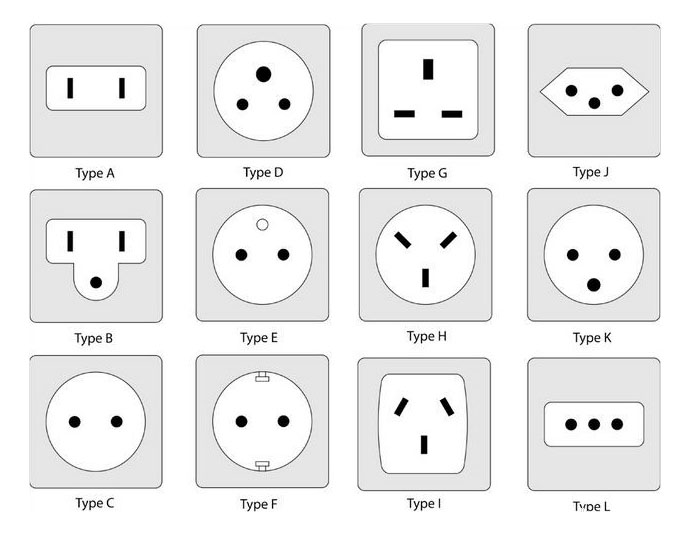
For climatic and cultural reasons, loose garments will be most appropriate: long trousers, long skirts, long-sleeved shirts, which can be easily washed and will quickly dry. The most comfortable footwear for the tour will be lightweight boots. Palladium brand boots are recommended. Wearing open sandals is possible. The following are worth taking:
- sachet for documents and money
- wet wipes for body cleaning and antibacterial gels
- hiking boots, they do not have to reach above the ankle (north-western Iran)
- sleeping bag – it may be useful for the trip to the north-western part of Iran
- raincoat, especially for the trip to the north-western part of Iran
- polar fleece jacket or warmer blouse which may prove useful at evening and night times
- head cover and sunglasses – mandatory, the sun is no joke!
- comfortable summer clothes, useful during practically the whole trip
- light T-shirts/shirts
- swimwear
- useful odds and ends: torch, Swiss Army knife, sewing kit (usually is not needed but is not heavy and does not take much place), chargers, mug (for special occasions); inflatable neck pillow, useful on the plane and during car rides; small wallet for the local currency; books to pass the time on flights and car rides
Price
Price: £ 2290 p/p
Two domestic flight Shiraz – Teheran – Kerman and Chabachar Teheran
During the tour, we will we will travel by passenger cars or minibuses, and also, if necessary, by off-road vehicles. Speed depends on the road surface conditions, terrain characteristics and number and length of stops.
We are not able to guarantee a uniform accommodation standard at each of the planned sites during the stay in Iran. Our priorities are your comfort, safety and appropriate location. We always place emphasis on the support of local community when selecting the sites for our accommodation. In general, rooms will be assigned on the assumption of two people sharing a twin room (rooms with individual bathrooms). The surcharges for single rooms are quoted in the “Price” section.
Two overnight stays in a hotel approximately corresponding to the 2, 3-star and 4-star standard are planned during the tour.
In some towns, we will stay for the night in traditional Persian houses transformed into small hotels.
In small towns and rural villages our accommodation will be in family bed and breakfasts or small hostels.
Meals are included in the tour price, as specified in the itinerary. B – breakfast, L – lunch, D – dinner. Breakfasts will be provided at the hotel. We will go for lunches and dinners to local restaurants. The cuisine of Iran is very varied, similarly as the culture and history of this part of the Middle East. Depending on the itinerary, we may be able to sample the local cuisine of Baluchistan, the region of the Strait of Hormuz, or the Caspian regions of the Gilan Province, where we may taste fish and seafood delicacies.
For information about the local costs of living see https://www.numbeo.com/cost-of-living/.
Local and special guides in national Parks
All entrance fees and permits to visit national parks and reserves in the itinerary
Trip preparation, the invitation necessary to obtain a visa
Costs of the main flight to and from Teheran
Costs of flight tickets are not covered by the tour price. BTP Adventure does not directly arrange and buy tickets for international flights. However, we may suggest the best connections and airlines. For this purpose, contact us by e-mail or call us.
Visa for the Islamic Republic of Iran. Online https://e_visa.mfa.ir/en/
Insurance is not covered by the tour price. Having valid insurance is a condition for taking part in the trip. We recommend taking out insurance that will be appropriate for the planned itinerary and for your individual state of health and needs. Please send us the proof of your insurance contract.
You can purchase insurance on your own on the website of Axa or any other insurance company: https://www.axa.co.uk/travel-insurance/.
BTP Adventure may help you obtain adequate insurance cover. If you want our help, please contact us.
The price does not includes the cost of tips and porters’ fees.
Meals other than those listed in the final itinerary.
Personal expenses and souvenirs.
Surcharge for a single room: 250 £
Trips to the sunrise in the Kalutów desert
Visit of Tehran on day 10
supplementary payment for the additional accommodation In the case of arrival or departure on a different date,
Final notes
We will keep updating the detailed information on the safety and final itinerary of the tour. Before you decide to submit the booking form, please learn about the current political and sanitary situation in the Islamic Republic of Iran , especially at the places on the itinerary of our tour.
The expedition “Iran – Southeast – 10 days” can be extended to the central part of Iran – “Persian Classic 12 days” or the north-western part of Iran.
Trip to Iran can be combined with trips to Iraq, Pakistan and Kurdistan. If you are interested, please contact the office.
The planned expedition is an exclusive proposal prepared on the basis of our experience and knowledge of the local peculiarities and major sightseeing attractions of the Islamic Republic of Iran
We are committed to ensure the best possible and safe and, as far as feasible, comfortable travelling through this rarely visited and extremely interesting country which is the Islamic Republic of Iran
Depending on the political situation, the length of the tour and the order of visited places may change. In a situation of a serious threat to travellers’ safety, the tour may be cancelled. We will keep you updated as to whether the expedition is possible.
With any questions please contact BTP ADVENTURE
2290 £ Per Person
The expedition “Iran – Southeast – 10 days” can be extended to the central part of Iran – “Persian Classic 12 days” or the north-western part of Iran.
Trip to Iran can be combined with trips to Afghanistan, Iraq, Pakistan and Kurdistan. If you are interested, please contact the office.

